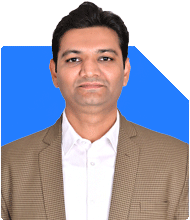Is increasing SIP by 1.4 L per month a good idea for early retirement at 56?
Ramalingam Kalirajan |9758 Answers |Ask -Follow
Mutual Funds, Financial Planning Expert - Answered on Jul 16, 2024
He has an MBA in finance from the University of Madras and is a certified financial planner.
He is the director and chief financial planner at Holistic Investment, a Chennai-based firm that offers financial planning and wealth management advice.... more

I am currently 51 and willing to retire at 56.current sips done is 1.33L per month.Started investing in June 2021 and so far invested value is 58 L and market value seen as 77 L..Now i am thinking to increase SIP by additinal 1.4 L per month so will it be good to increase sips for next 5 years .Pl advise.
You are investing Rs. 1.33 lakhs per month in SIPs. Since June 2021, your investment of Rs. 58 lakhs has grown to Rs. 77 lakhs. This shows good growth in your portfolio.
Increasing SIPs
You plan to increase your SIPs by Rs. 1.4 lakhs per month for the next 5 years. This will significantly boost your investment corpus. Regular investments in diversified funds can yield good returns over time.
Evaluating Investment Strategy
Increasing SIPs is a good strategy. Ensure you diversify across large cap, midcap, and small cap funds. Actively managed funds can offer better returns than index funds.
Balancing Risk and Returns
As you are nearing retirement, balance your portfolio to manage risk. Consider allocating a portion to debt funds for stability. This ensures safety and steady returns.
Planning for Retirement
With increased SIPs, your retirement corpus will grow substantially. Review your portfolio regularly. Adjust based on market conditions and financial goals.
Insurance and Emergency Fund
Ensure you have adequate life and health insurance. Maintain an emergency fund covering 6-12 months of expenses. This provides financial security for unforeseen events.
Final Insights
Increasing your SIPs by Rs. 1.4 lakhs per month is a good strategy. Ensure diversification and balance risk. Regular reviews and adjustments will help you achieve your retirement goals.
Best Regards,
K. Ramalingam, MBA, CFP,
Chief Financial Planner,
www.holisticinvestment.in
You may like to see similar questions and answers below
Omkeshwar Singh | Answer |Ask -Follow
Head, Rank MF - Answered on Jun 13, 2022
Omkeshwar Singh | Answer |Ask -Follow
Head, Rank MF - Answered on Dec 14, 2021
Omkeshwar Singh | Answer |Ask -Follow
Head, Rank MF - Answered on Dec 06, 2022
Ramalingam Kalirajan |9758 Answers |Ask -Follow
Mutual Funds, Financial Planning Expert - Answered on Apr 02, 2024
Ramalingam Kalirajan |9758 Answers |Ask -Follow
Mutual Funds, Financial Planning Expert - Answered on May 26, 2024
Nayagam P P |8983 Answers |Ask -Follow
Career Counsellor - Answered on Jul 18, 2025
Nayagam P P |8983 Answers |Ask -Follow
Career Counsellor - Answered on Jul 18, 2025
Nayagam P P |8983 Answers |Ask -Follow
Career Counsellor - Answered on Jul 18, 2025
Nayagam P P |8983 Answers |Ask -Follow
Career Counsellor - Answered on Jul 18, 2025
Nayagam P P |8983 Answers |Ask -Follow
Career Counsellor - Answered on Jul 18, 2025
Vipul Bhavsar |97 Answers |Ask -Follow
Tax Expert - Answered on Jul 18, 2025
Vipul Bhavsar |97 Answers |Ask -Follow
Tax Expert - Answered on Jul 18, 2025
Nayagam P P |8983 Answers |Ask -Follow
Career Counsellor - Answered on Jul 17, 2025
Dr Nagarajan J S K |1851 Answers |Ask -Follow
NEET, Medical, Pharmacy Careers - Answered on Jul 17, 2025
Dr Nagarajan J S K |1851 Answers |Ask -Follow
NEET, Medical, Pharmacy Careers - Answered on Jul 17, 2025






















